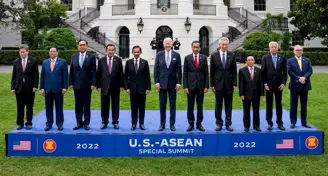American vs. Southeast Asian Startups: Why Silicon Valley Struggles In SEA Market
Working for tech companies in America and Southeast Asia comes with significant differences. It is important to understand that there is no universal approach that can be applied to both regions which is why American companies often struggle to establish themselves in Southeast Asian markets.
In this blog, we compare Southeast Asia tech companies with their American counterparts and analyze why Silicon Valley giants, from Uber, and Zalora to more recent ones like Wework, have struggled in the Southeast Asian market.
Differences Between American and Southeast Asia Tech Startups

In this blog, we compare Southeast Asian tech companies with their American counterparts and analyse why Silicon Valley giants, from Uber and Zalora to more recent ones like Wework, have struggled in the Southeast Asian market.
The first impression most people have regarding the difference between Southeast Asian and American tech companies is that Southeast Asian companies at copycats, while American companies innovate. For example, Grab, Forbes once referred to “The Cloner” of Uber.
The first difference is rooted in the unique backgrounds of each country. Creating world-class tech companies requires a shared knowledge and inspiration base, not one conjured out of thin air. In the United States, universities, companies, and senior engineers mentor the next generation, passing down experience. Each generation of breakthrough products and the companies that create them build on the foundation of the previous generation.
For example, many people know that Apple's two founders, Steve Jobs and Steve Wozniak, were deeply influenced by HP, with Wozniak having worked there. In contrast, Apple was founded in 1976, while Southeast Asia began its reform and opening up few years later, without any private companies before that. When Google was founded in 1998, 30% of Americans were already online, compared to only 3.7% of Southeast Asians. "Early Southeast Asia tech company entrepreneurs couldn't find experienced mentors or companies to learn from in Southeast Asia. So, they had to go abroad to learn, imitate, and borrow."
Imitating will certainly receive criticism and accusations. However, through imitation, Southeast Asian entrepreneurs began accumulating experience in areas like user interface design, website architecture, and software development.
If we merely view these Southeast Asian entrepreneurs as imitators and cloners, we miss the key to their success. The key lies in continuously adjusting their products and business models based on user feedback after the product's launch, "ultimately optimizing it for the local market." Entrepreneurs like Anthony Tan after studied in the US, become world-class entrepreneurs, and their companies grow into multi-billion giants.
Key Distinctions Between American and Southeast Asia tech companies

-
Iteration and Optimisation
This is the first distinction between Southeast Asian and American startup companies. Southeast Asia tech companies do not shy away from imitation but quickly iterate and optimize their products and business models afterwards. Inside Facebook, there's a slogan: "Don't be too proud to imitate," and some joke that Facebook is more like a Southeast Asian company, and they are also success in Southeast Asia.
-
Lean Startup Approach
The second difference is that Southeast Asian startups favor the concept of lean startup, focusing on the market and users. In contrast, Silicon Valley tech companies emphasize their mission and are more mission-driven.
Though the term "lean startup" also originated in Silicon Valley, its true believers can be found in Southeast Asia. Due to cultural reasons, Silicon Valley entrepreneurs are easily inspired by values and missions, creating great companies around their values and missions. However, such noble values and missions can sometimes conflict with market orientation.
In Southeast Asia, due to intense competition, entrepreneurs are more market and user-oriented. "Noble missions or values are not their responsibility or their core focus. Their core focus is their user, and they are willing to let their user demands guide their companies. Intense competition forces companies to iterate products, adjust strategies and invent new business models. In a market where imitation and emulation are common, entrepreneurs can only work harder than their competitors and execute more effectively."
-
Core Difference in Business Approach
Companies in Silicon Valley believe the fundamental power of the Internet lies in sharing information, bridging knowledge gaps, and connecting the masses digitally. It establishes platforms and then lets real-world businesses handle the work.
Southeast Asia tech companies, on the other hand, not only build platforms but also establish logistics and delivery teams, and warehouses, provide and maintain electric vehicles, and even subsidize the entire process, ultimately, they are competing using price wars.
The result of these two approaches is that Silicon Valley giants collect data from users' online activities, such as searching for content, watching videos, and liking posts. Southeast Asia tech companies, however, can collect data based on user behaviour in the real world, including food delivery orders, product purchases, choice of transportation services, and more. The substantial data generated by Southeast Asia's down-to-earth tech ecosystem provides more information for deep learning algorithms.
-
Localization in Southeast Asia tech companies
The fourth difference is that Silicon Valley companies tend to use the same products and services to conquer global markets, while Southeast Asia tech companies excel in localization. Companies like Google and Facebook in Silicon Valley do not like to adjust their core products and business models according to local user habits and preferences; they believe that creating a great product is sufficient. This creates opportunities for local entrepreneurs. Southeast Asian entrepreneurs are willing to iterate and improve their products based on Southeast Asian user preferences.
This difference is also reflected in global markets. When Southeast Asia tech companies like Grab, Lazada and Shopee expand globally, they prefer to invest in local players in each market, using local companies to capture the market. In contrast, American tech companies prefer to enter local markets directly and compete with local companies.
Why have Silicon Valley Giants Failed in Southeast Asia?

Now that we've discussed these four differences between Southeast Asia and American tech companies, let's address the question: Why have Silicon Valley giants largely failed in Southeast Asia?
Many Westerners might think that it's due to the Southeast Asian government's protection of local companies. However, the way Silicon Valley companies entered Southeast Asia is the reason for their failure in the Southeast Asian market.
"They didn't invest resources, lacked patience, didn't grant freedom to the Southeast Asian teams, and thus made it impossible for their teams to compete with Southeast Asia's top entrepreneurs. They thought the primary task in the Southeast Asian market was to sell their existing products to Southeast Asian users. In reality, they should have tailored their existing products or created new ones specifically for the Southeast Asian market, based on the characteristics and needs of Southeast Asian users. Their resistance to product localization slowed down product iteration, making it extremely difficult for the local teams."
Furthermore, as local Southeast Asia tech companies grow, Silicon Valley giants don't have an advantage in attracting top talent. If top talent joins an American company's Southeast Asian team, the company treats them as local employees. Truly outstanding and ambitious young people choose to start their own businesses or join top Southeast Asia tech companies.
We hope this article provides you with a better understanding of the differences in work culture between Southeast Asian and American tech companies. While these differences are significant, both have their own unique strengths and challenges.
